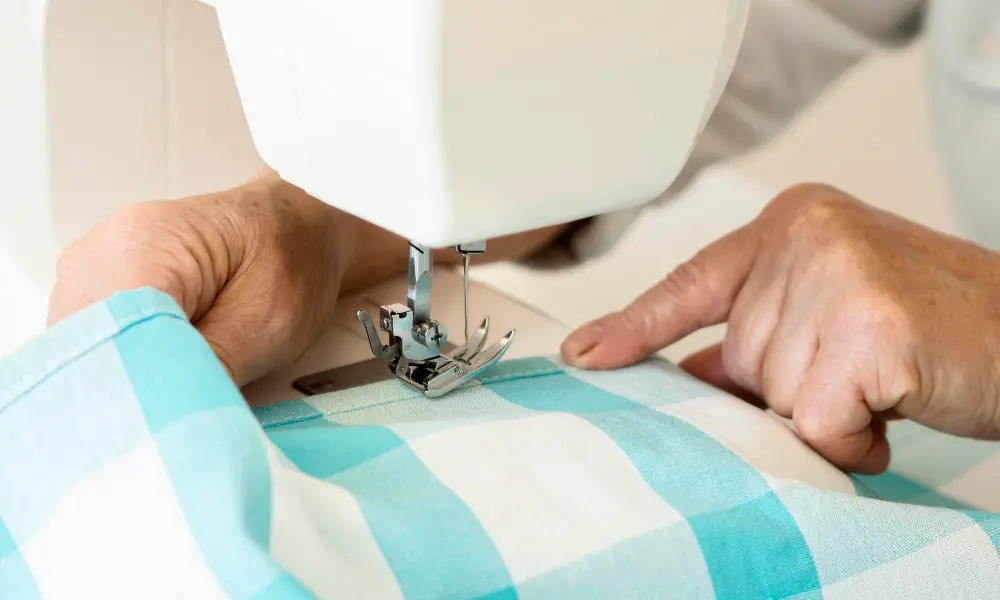Sitting down to work on a sewing project only to keep the thread breaking is aggravating! You start stitching your fabric, hear a pop, and see your top thread has snapped again. While an occasional break is regular, constant thread snaps can ruin your sewing flow. So, what causes this pesky problem, and how can you stop it? Let’s explore some potential reasons behind persistent thread breaks.
Common Culprits for Thread Breaks
The thread often breaks repeatedly due to a handful of everyday issues. Here are some things to look at if your thread keeps snapping.
Tension Troubles
One frequent cause of repeating thread breaks is incorrect tension settings. The tension dials on your sewing machine control how taut the top and bobbin threads are pulled. If too loose, you get loops. Too tight puts too much strain on the thread, leading to breaks, especially with delicate fabrics.
The ideal tension has the threads locking in the middle of the fabric layers. If tension is balanced but too tight overall, the thread is prone to snapping. Check your manual for guidance on adjusting top and bobbin tensions.
Damaged or Wrong Needles

The needle’s condition and size can lead to thread breaks, too. Even tiny defects around the needle tip or eye can shred thread. Needles bent, dull, or low-quality can prevent the thread from becoming strained. Make sure to change needles often. Choose needles to suit the fabric – fine for delicate, thicker for heavy. Avoid hitting needles to prevent damage.
Poor Quality Thread
Cheap or low-grade thread is more likely to fray and break excessively, particularly in the tension discs. Invest in quality threads made for your machine type to reduce chronic breaks.
Other Breakage Causes
While tension, needles, and thread quality are every day, other things can also cause thread snapping.
Bobbin Issues
Lack of thread on the bobbin, incorrect bobbin tension, improper insertion, or lint in the bobbin case can all hinder smooth threading and cause breaks.
Gunk in Thread Paths
Lint, dust, oil, or any debris in your machine’s thread paths can snag thread as it moves through the mechanisms and make it snap.
Hitting Obstructions
It can break if the presser foot strikes a pin or the thread rubs on sharp edges around the needle plate.
Fixing Repeated Thread Breaks
If you have ongoing thread breaks, here are some troubleshooting tips.
- Check tension settings against your machine’s recommendations. Make minor tension adjustments until balanced.
- Try a fresh, undamaged needle suited for your fabric type and weight. Make sure it’s fully inserted.
- Clean any lint or dirt from discs, guides, take-up lever, and bobbin areas.
- Switch to a higher-quality thread designed for your machine model.
When to Seek Repair Service
If breakage persists after troubleshooting, it likely indicates an internal problem needing professional service. Signs include uneven stitches, tangled threads, and error messages. Make an appointment with your machine brand’s authorized repair shop. With the proper fixes, your machine will again sew without constant stops for broken threads!
I hope exploring common thread-breaking causes gives you ideas on troubleshooting and stopping repeated breaks. Let me know in the comments what solutions have worked to stop thread snapping on your machine!
FAQS
Why does my thread keep snapping suddenly?
The suspects are incorrect tension, damaged needles, cheap thread, lint/debris buildup, or hitting obstructions. Check the article for more details on these common thread break causes.
What can I do to stop repeated thread breaks?
Tips to prevent breaks include:
Matching quality thread to fabric.
Replacing needles regularly.
Cleaning out lint.
Setting proper tension.
Keeping threading paths clear of obstructions.
How tight should my sewing machine tensions be?
Set tension so the top and bobbin threads interlock in the fabric’s middle. Adjust up or down as needed to avoid looseness or over-tightness, leading to breaks.
How often should sewing needles be swapped out?
Plan on changing your needle every 2-4 projects or 8-10 hours of stitching time. Use the right size and type for your fabric.
How do I clean out my machine’s lint and debris?
Check your manual for safely accessing and cleaning the tension discs, guides, take-up lever, bobbin case, and all the thread pathways. Go slowly and gently.
Sewing Up This Thread Breakdown
Thread breaks during sewing projects can throw off your groove. But now you have a checklist of likely culprits behind these pesky thread snaps. Start by looking at tension, needle condition, thread quality, and buildup in your machine’s pathways. Make any needed adjustments to these basics. If you’ve tried everything and are still coming unraveled with constant breaks, it’s time to bring in an expert for a tune-up. With thoughtful troubleshooting and a few fixes, you’ll be sewing seam after seam in no time without stops for busted thread. I’d love to hear what has worked to get your machine sailing smoothly again after battles with thread breaks. Share your top tips in the comments to help other seamsters!
***
Main image: freepik




